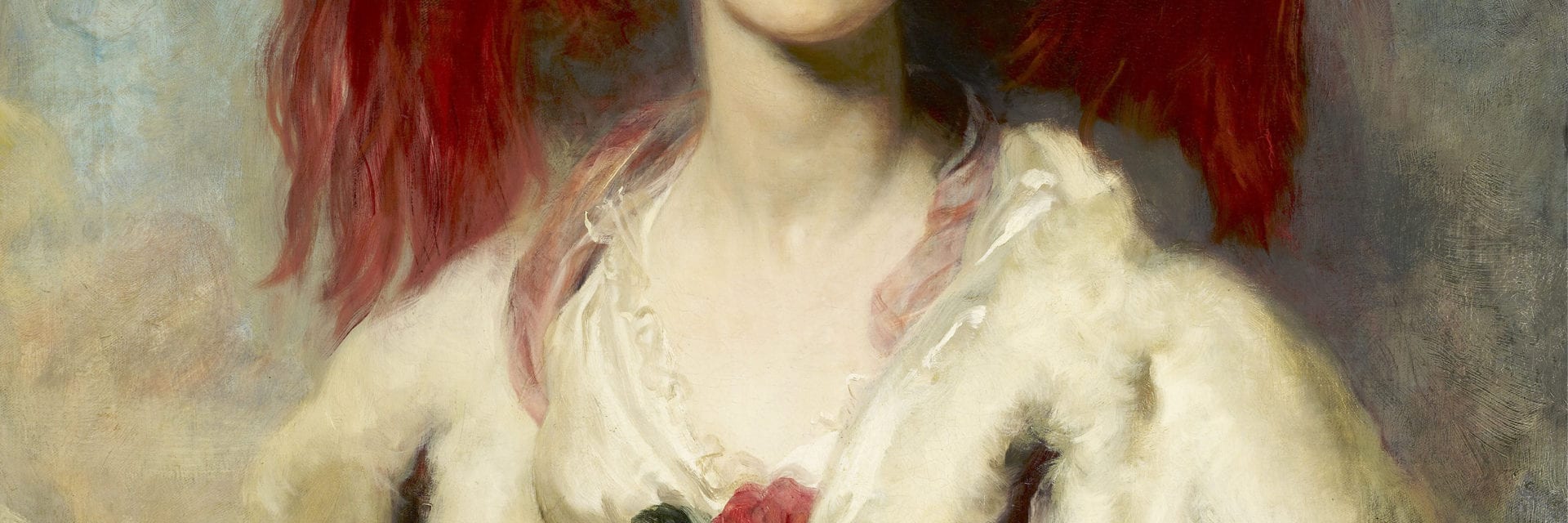

According to librettist W.S. Gilbert – ‘When constabulary duty’s to be done, a policeman’s lot is not a happy one.’ The same cannot be said for Sir Robert Peel, founder of the Metropolitan Police Force, and his family, whose lot seems to have been pretty jolly, by and large.
The Peel’s London residence was No 4 Privy Gardens, a property adjoining Whitehall Palace, boasting a large bow window and a fine gallery of paintings by old masters, and the best collection of modern portraits by Sir Thomas Lawrence, including one of Lady Peel.
The couple’s eldest daughter Julia was born at the Peel’s Drayton Manor estate in Staffordshire in 1821, shortly before Sir Robert became Home Secretary in 1822, establishing the Metropolitan Police Force in 1829. Sir Robert held the office of both Chancellor of the Exchequer and Prime Minister in 1834 – 1835, and served again as Prime Minister in 1841 – 1846.
On July 12, 1841 Julia married Tory politician George Augustus Frederick Child Villers, who served as MP for Rochester, Minehead, Honiton, Weymouth & Melcome Regis and Cirencester during a career spanning more than twenty years. George’s ancestry can be traced back to that dynastic coupling of Sir Edward Villiers, half brother to Royal favourite the 1st Duke of Buckingham, and Barbara St John who grew up at Lydiard House in Wiltshire.
Julia and George divided their time between their country home at Middleton Stoney, Oxfordshire and their London address. Following 18 years of marriage and six children, George, who was suffering from consumption, died suddenly at their London home on October 24, 1859, just three weeks after succeeding to the title and estates of the earldom of Jersey. The couple’s fifteen year old son Victor unexpectedly became the 7th Earl of Jersey.
Julia appears to have been in no hurry to remarry and when she did so it was to Charles Brandling, a man some 12 years her junior. The wedding took place at St Paul’s Church, Knightsbridge on September 12, 1865 ‘in the presence of a large circle of relations and friends,’ according to The Standard.
The ceremony was followed by a ‘sumptuous dejeuner’ at the home of Julia’s sister Eliza Stonor. Invitations were restricted to immediate family members and a few intimate friends with a guest list straight out of Burke’s peerage – the duke and Duchess of Wellington, the Countess of fife and Lady Anne Duff, the Earl and Countess of Clarendon and a selection of honourable Villiers’s and various Peels.
Charles Brandling lived on his interest of money, according to the census returns and appears to have little to recommend him. In her book ‘Fifty one years of Victorian Life’ Julia’s daughter in law Margaret Leigh writes: ‘My mother-in-law and her second husband, Mr. Brandling, were among our frequent visitors. Mr Brandling had a long beard and a loud voice, and a way of flinging open the doors into the dining-room when he came in in the morning which was distinctly startling. Apart from these peculiarities he did not leave much mark in the world. He was very fond of reading, and I used to suggest to him that he might occupy himself in reviewing books, but I do not think that he had much power of concentration. My mother-in-law was tactful with him, but he had a decided temper, especially when he played whist. As I did not play, this did not affect me.’
Julia contracted a chill whilst on holiday in Switzerland and died suddenly on August 14, 1893 at the Villa Lammermoor, Petit Saconnes, Geneva. Her body was returned to England where she was buried in the family vault at Middleton Stoney.
In an effusive obituary published in the Morning Post, Lady Jersey was described as ‘a type of those fast disappearing ladies who directly connect us with the fine manners and pleasant ways of the earlier part of the century… The passage of years left little trace upon her lively and impulsive character; but as they rolled by so amiable and sincere a heart was sure to gather, as it did, troops of friends in the best sense of the word. She will be widely and sincerely mourned.’